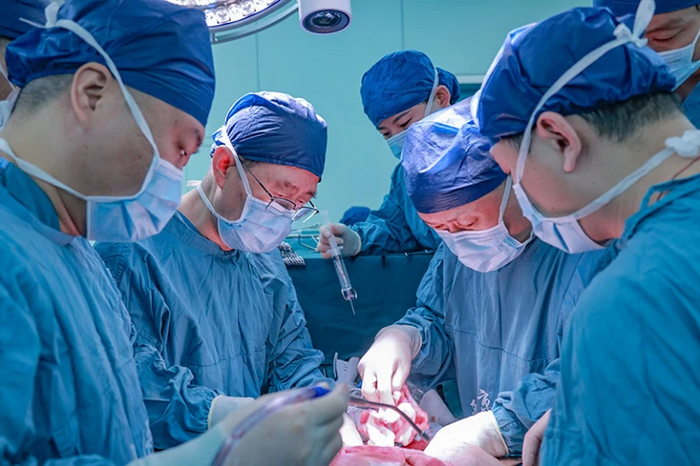In 2000, the Human Genome Project released the first sequencing draft of the human genome.
To materialize this milestone, the collaboration of scientists spread all over the globe, 3,000 million dollars of funding and more than a decade of routine, rather than conventional, work were necessary.
Twenty years later,
reading
or
writing
DNA are considered common tasks, relatively simple and with affordable costs for companies and research groups.
Likewise, genetic engineering has also become normalized and, to a certain extent, the editing of a microorganism can remind us of computer programming today.
Genetic manipulation of food, plants or microorganisms has advantages and challenges in equal measure.
At the National Center for Biotechnology (CNB-CSIC), the laboratory led by Víctor de Lorenzo has developed, together with Natalio Krasnogor, from the University of Newcastle, a technique that uses bar codes to identify cells and thus track those microorganisms that have been genetically modified.
"In reality our identifier is not a fingerprint as such," says De Lorenzo.
And he continues: “What we do is insert into the genome of the microorganism a sequence of nucleotides that has no biological function and that is unique in the biosphere, so that all available information about the microorganism can be accessed through this identifier. organism.
What has been changed, how,
If life makes its way... genes too
Organisms capable of degrading toxic compounds, destroying plastics or that can capture greenhouse gases are very valuable resources to mitigate environmental problems, but the attractiveness of these modified organisms has increased along with social concern and opposition to them. the same.
De Lorenzo explains: “What has been tried to do for many years to alleviate this concern has been to design programmed circuits in the bacteria themselves so that, in the event that the bacteria leave what should be their application environment, a suicide system.
We can make a bacterium depend for its survival on a nutrient that is only found where it is expected to function, so if it escapes it dies.
And this is just one of the many avenues we have.”
This is the information that appears in the repository about any microorganism registered in the database.
In the image, the bacterium 'Pseudomonas putida', a microorganism widely used for industrial and environmental applications. Cristina Patiño (CNB).
However, it has been seen that evolution itself causes microorganisms to end up circumventing these margins and adapting to new environments: "What we have proposed with CellRepo is to make a virtue of necessity, and instead of trying to control a bacterium so that it does not escapes, we put a stamp thanks to which we can have all the information about that particular bacterium.
Thus, we can know what should be done in the event that it is not found where it should be: if there is any biological danger, if it has any antibiotic resistance... and, above all, we can trace where that bacteria comes from, and we can establish the responsibility in case something goes wrong”, summarizes De Lorenzo.
Four “letters” to know the world
While the Newcastle team has been in charge of leading the computational part of the project, the CNB-CSIC has developed the technique responsible for inserting the identifier into the genome of organisms.
Regarding the method, De Lorenzo highlights: “This barcode is established in the chromosome of the microorganism in a place where it does not interfere.
It is like a seal, so it does not influence the functioning of the bacteria.”
So these barcodes are nothing more than sequences of those letters that make up any type of life (A, C, G, T), from bacteria and other microorganisms to the human being itself.
How can they, then, not interfere with the biological functioning of the organism?
Elena Velázquez, researcher at the CNB-CSIC.CNB
Elena Velázquez is the CNB-CSIC researcher who has carried out the genetic engineering technique capable of introducing identifiers into living beings.
Regarding this aspect, Velázquez explains: “First, the CellRepo algorithm is responsible for creating a unique and independent identifier.
Once we have this, we carry out a BLAST, which is a technique that will allow us to search for sequences homologous to this identifier within the genome of the organism.
If there is a low homology, we can use it without problems, but if the opposite happens, we must look for another identifier with a different sequence, since otherwise we would be introducing an already existing sequence in the genome with a possible biological activity”.
Juan Luis Ramos, a researcher at the Zaidín Experimental Station, is an expert in the use of genetic engineering of microorganisms for their application in industrial and environmental purposes.
Regarding the possibility of using a repository like CellRepo, Ramos comments: "Although the consensus of the scientific community is that the dangers of releasing a modified organism into the environment do not go beyond the dangers that may be associated with the nature of the microorganism itself, current legislation does not allow the use of these organisms except under conditions of physical containment.
For this reason, I believe that this work shows a very important turning point for the monitoring of any microorganism, since it is totally unequivocal”.
It is not the first time that such a technology has been used to identify living beings.
In 2014, researchers at the University of Osaka (Japan) developed a watermark to trace transgenic plants.
CellRepo opens up a new horizon: although the repository only includes bacteria and yeasts, the intention of its creators is to expand this catalog to include more complex life forms.
Despite being an idea that benefits researchers and offers peace of mind to the population, CellRepo will have to face great challenges to establish itself as a feasible option.
Luis Serrano Pubull, director of the Center for Genomic Regulation in Barcelona and an expert in synthetic biology, points out that CellRepo's difficulties lie in its acceptance: "The problem is to persuade researchers to introduce the barcode in their organisms in a general way .
If, for example, scientific journals make use of this technology a requirement to publish a study of this type, it will undoubtedly have a great impact”.
The future of CellRepo will depend, in part, on the standardization of the repository as a necessary resource to make bioengineering a fairer and safer area of research.
Content produced within the CSIC Grant Program – BBVA Foundation for Scientific Communication, Call 2021.
You can follow
MATERIA
on
,
and
, or sign up here to receive
our weekly newsletter
.
Exclusive content for subscribers
read without limits
subscribe
I'm already a subscriber







